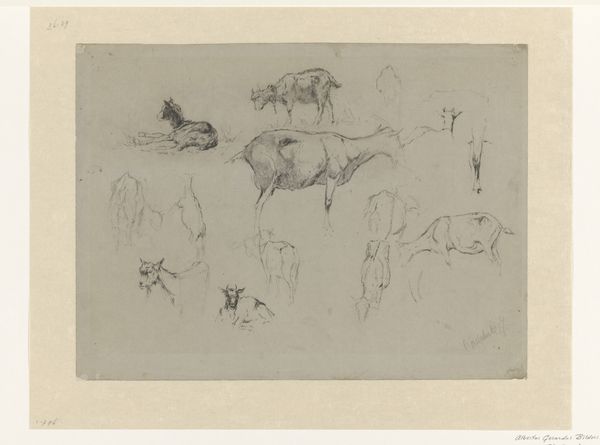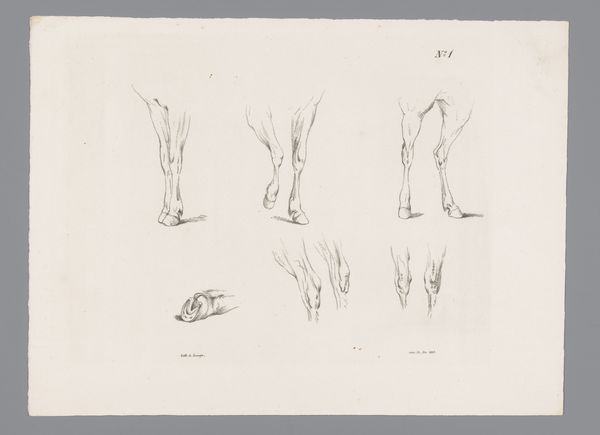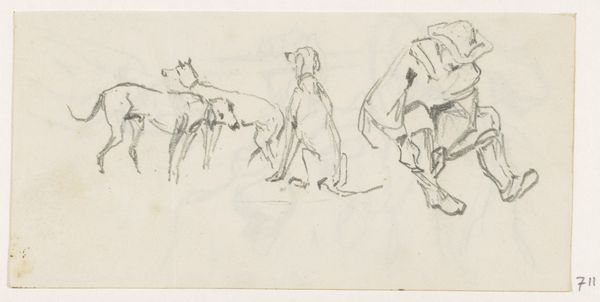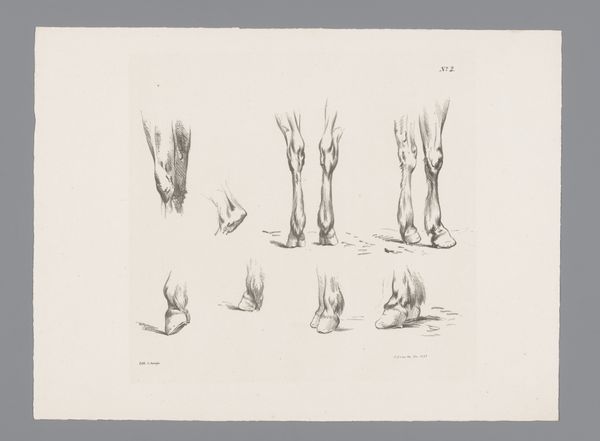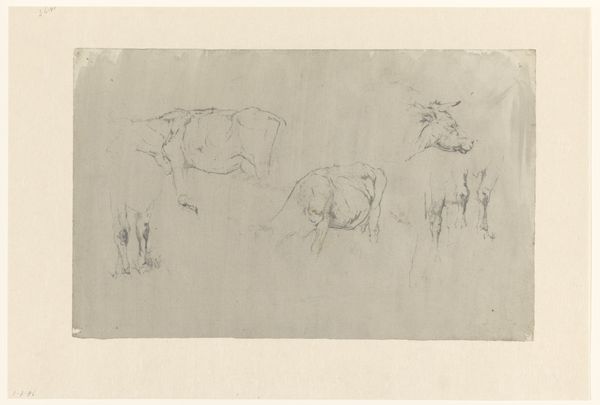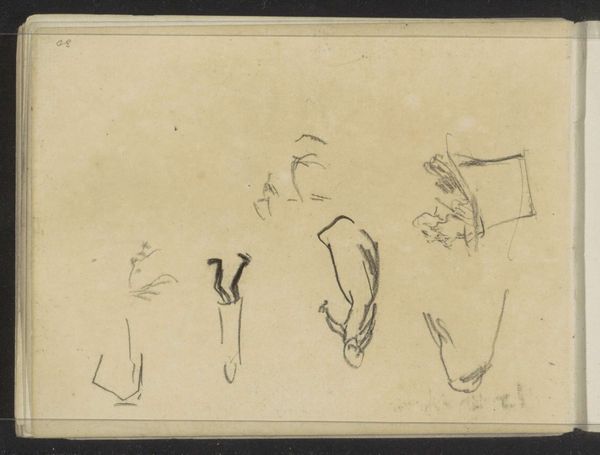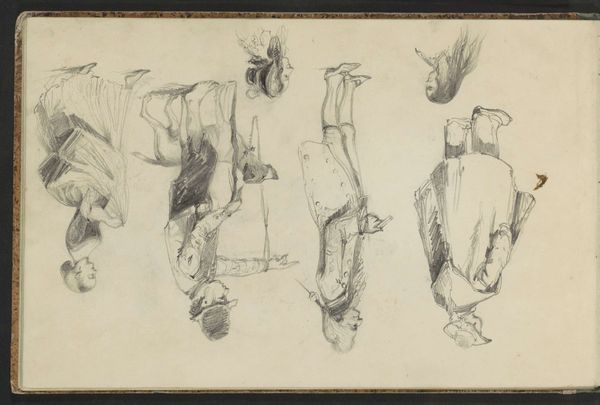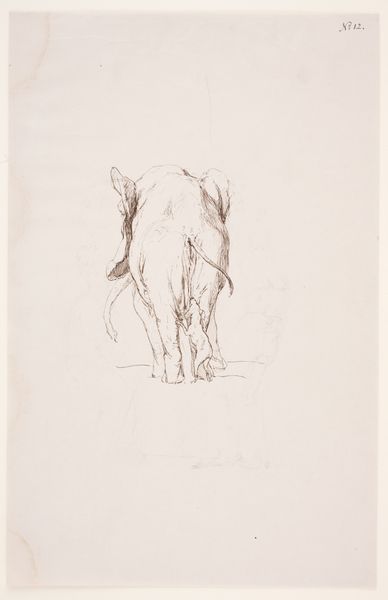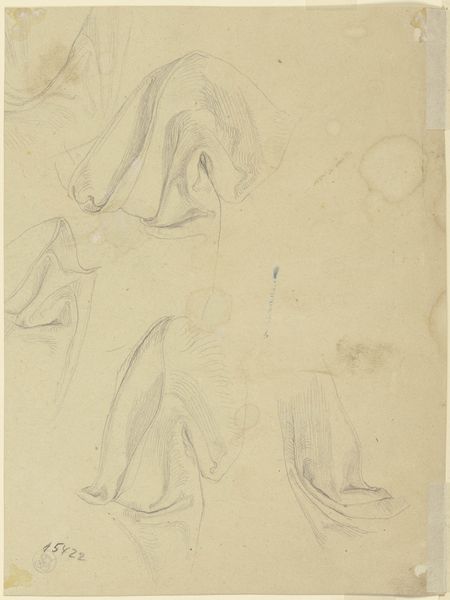
drawing, pencil, graphite
#
drawing
#
dutch-golden-age
#
landscape
#
pencil
#
graphite
#
realism
Dimensions: height 400 mm, width 299 mm
Copyright: Rijks Museum: Open Domain
Curator: This is "Schetsblad met studies van koeienpoten," a sheet of studies of cow legs, by Gerard Bilders, dating from around 1848 to 1865, created with graphite and pencil. It feels incredibly... grounded, literally. So much attention on just this part of the animal. What strikes you about it? Editor: Well, first of all, it's unexpected. You see so many grandiose landscapes from this period, and here we have studies focusing entirely on the cow's anatomy from the Dutch Golden Age and Realism movements. I'm interested in how the focus on these legs elevates their presence and draws attention to their labor in the fields. Is this an artistic exploration, or something more sociological in intent? Curator: It’s compelling to consider this through a materialist lens. Bilders, by isolating and meticulously depicting these legs, is, in a way, acknowledging the animal's labor – its contribution to the agricultural economy. Consider the materiality of the drawing itself: graphite and pencil, simple tools used to capture the form and weight-bearing function of the limbs. Editor: So you’re saying the artistic tools and techniques employed reinforce a focus on manual labor? Curator: Exactly. It forces us to confront the means of production – both the artist’s and the animal's. Where was this drawing created? In a studio far removed from the farm, or perhaps closer to the source? The location shifts the analysis and introduces additional economic factors in the creative production process. Editor: It hadn’t occurred to me to think of the artist’s work as labor, connected to the animal's. That shift in perspective is quite insightful, really highlighting the economic considerations of both artist and cow! Thank you. Curator: Absolutely! Seeing the interconnectedness is key. Art doesn't exist in a vacuum; it's a product of its time, influenced by social, economic, and material conditions.
Comments
No comments
Be the first to comment and join the conversation on the ultimate creative platform.
